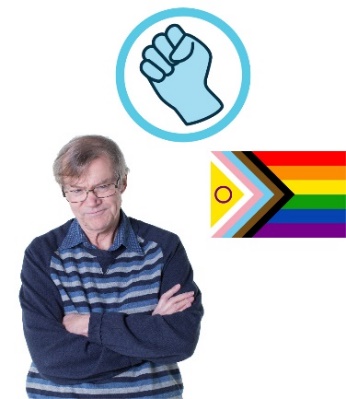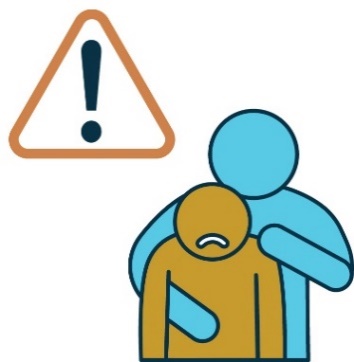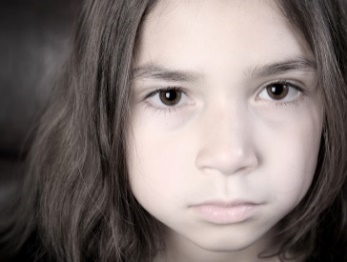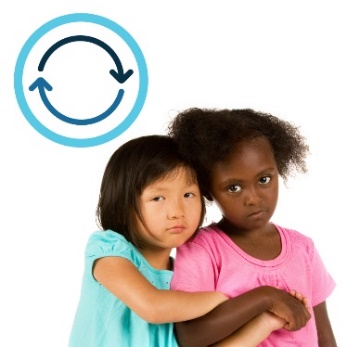How does violence affect different communities?
| Women in Australia are all different. And they can experience violence in many ways. |
| We must think about how different people experience violence. And what each person needs. |
| We explain how some groups of people experience violence on the following pages. |
Women of different ages
| Women can experience different types of violence across their life. |
People can use violence against girls and young women to: | |
|
|
|
|
|
|
| Young women are also more likely to experience partner violence. |
| Older women can also experience violence. |
| Older women might experience:
|
| Older women are also more at risk of being homeless. People who are homeless do not have a home. They must find a place to sleep each night. |
Women with disability
| Women with disability can experience violence:
|
| They can also experience violence from many different people, including:
|
| Women with disability can experience violence when other people make decisions for them. For example, decisions to stop them from:
|
| They are also more at risk of technology-facilitated abuse when their disability affects how they:
| |
| We call it technology-facilitated abuse when people use technology as part of their violence. They might use a device, like a phone or computer. Or they might use social media, like Facebook or Snapchat. | |
| Some people in Australia have bad attitudes towards people with disability. | |
| Because of this, some people think it’s okay to:
| |
Aboriginal and Torres Strait Islander women
| Aboriginal and Torres Strait Islander women experience:
| |
| Aboriginal and Torres Strait Islander women are much more likely to:
| |
| They also face other challenges. Aboriginal and Torres Strait Islander peoples are often kept away from their:
| |
| Your culture is:
| |
| Aboriginal and Torres Strait Islander women experience violence from men of all backgrounds. Not just Aboriginal and Torres Strait Islander men. | |
| Many Aboriginal and Torres Strait Islander women are afraid people will take their children away. This happened a lot in the past. | |
| This is something that can still happen. Too many Aboriginal and Torres Strait Islander children are taken away from their family if they experience violence. | |
| Because of this, many Aboriginal and Torres Strait Islander women are scared to report violence. Or get help when they need it. | |
| The justice system often doesn't understand how Aboriginal and Torres Strait Islander women experience violence. The justice system can blame them for violence when they try to get help. | |
| The justice system helps to make people who use violence responsible for their behaviour. This includes:
| |
Culturally and linguistically diverse women
| Culturally and linguistically diverse (CALD) people:
|
| Violence can affect CALD women who have:
|
| Sometimes CALD women might be visiting Australia for a short time to travel, work or live. |
| These women might not have friends and family in Australia to support them. |
| Some CALD women might experience violence from a person they rely on to stay in Australia – like a partner. They might not ask for help because they worry about having to leave Australia. |
| CALD women might also not get help with violence because supports and services don’t:
|
| Other CALD people in Australia can also include:
|
| They can be at risk of violence because:
|
LGBTIQA+ people
| The letters LGBTIQA+ stand for lesbian, gay, bisexual, transgender, intersex, queer or questioning and asexual. |
| The ‘+’ is for people who are part of the LGBTIQA+ community but don’t talk about themselves using a word from this list. |
| LGBTIQA+ people can experience violence because of:
|
| Your gender is what you feel and understand about who you are as a person. It isn’t about whether your body looks male or female. |
| LGBTIQA+ people experience the same kinds of violence that other people experience. |
| But they also experience different kinds of violence. For example, people might:
|
| People might also:
|
| Or people might force LGBTIQA+ people to do sexual acts they don’t want to do. |
Children and young people
| Children can experience violence when:
| |
| When children experience violence, it can affect:
| |
| The effects on children who experience violence can last for a long time. And it can affect:
| |
| Children who experience violence are more likely than other children to use violence when they are adults. So it’s important to stop this by supporting children when they are young. | |
How does violence affect different communities?
| Women in Australia are all different. And they can experience violence in many ways. |
| We must think about how different people experience violence. And what each person needs. |
| We explain how some groups of people experience violence on the following pages. |
Women of different ages
| Women can experience different types of violence across their life. |
People can use violence against girls and young women to: | |
|
|
|
|
|
|
| Young women are also more likely to experience partner violence. |
| Older women can also experience violence. |
| Older women might experience:
|
| Older women are also more at risk of being homeless. People who are homeless do not have a home. They must find a place to sleep each night. |
Women with disability
| Women with disability can experience violence:
|
| They can also experience violence from many different people, including:
|
| Women with disability can experience violence when other people make decisions for them. For example, decisions to stop them from:
|
| They are also more at risk of technology-facilitated abuse when their disability affects how they:
| |
| We call it technology-facilitated abuse when people use technology as part of their violence. They might use a device, like a phone or computer. Or they might use social media, like Facebook or Snapchat. | |
| Some people in Australia have bad attitudes towards people with disability. | |
| Because of this, some people think it’s okay to:
| |
Aboriginal and Torres Strait Islander women
| Aboriginal and Torres Strait Islander women experience:
| |
| Aboriginal and Torres Strait Islander women are much more likely to:
| |
| They also face other challenges. Aboriginal and Torres Strait Islander peoples are often kept away from their:
| |
| Your culture is:
| |
| Aboriginal and Torres Strait Islander women experience violence from men of all backgrounds. Not just Aboriginal and Torres Strait Islander men. | |
| Many Aboriginal and Torres Strait Islander women are afraid people will take their children away. This happened a lot in the past. | |
| This is something that can still happen. Too many Aboriginal and Torres Strait Islander children are taken away from their family if they experience violence. | |
| Because of this, many Aboriginal and Torres Strait Islander women are scared to report violence. Or get help when they need it. | |
| The justice system often doesn't understand how Aboriginal and Torres Strait Islander women experience violence. The justice system can blame them for violence when they try to get help. | |
| The justice system helps to make people who use violence responsible for their behaviour. This includes:
| |
Culturally and linguistically diverse women
| Culturally and linguistically diverse (CALD) people:
|
| Violence can affect CALD women who have:
|
| Sometimes CALD women might be visiting Australia for a short time to travel, work or live. |
| These women might not have friends and family in Australia to support them. |
| Some CALD women might experience violence from a person they rely on to stay in Australia – like a partner. They might not ask for help because they worry about having to leave Australia. |
| CALD women might also not get help with violence because supports and services don’t:
|
| Other CALD people in Australia can also include:
|
| They can be at risk of violence because:
|
LGBTIQA+ people
| The letters LGBTIQA+ stand for lesbian, gay, bisexual, transgender, intersex, queer or questioning and asexual. |
| The ‘+’ is for people who are part of the LGBTIQA+ community but don’t talk about themselves using a word from this list. |
| LGBTIQA+ people can experience violence because of:
|
| Your gender is what you feel and understand about who you are as a person. It isn’t about whether your body looks male or female. |
| LGBTIQA+ people experience the same kinds of violence that other people experience. |
| But they also experience different kinds of violence. For example, people might:
|
| People might also:
|
| Or people might force LGBTIQA+ people to do sexual acts they don’t want to do. |
Children and young people
| Children can experience violence when:
| |
| When children experience violence, it can affect:
| |
| The effects on children who experience violence can last for a long time. And it can affect:
| |
| Children who experience violence are more likely than other children to use violence when they are adults. So it’s important to stop this by supporting children when they are young. | |















































